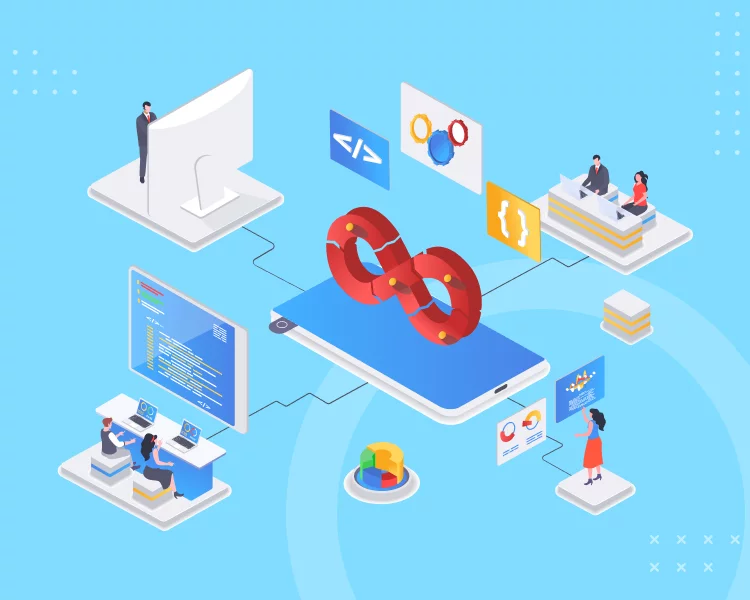Summary: Not long ago, software companies considered software design a bit of an afterthought. Functionality was primary, and design was merely a matter of aesthetics. As the software industry evolved, intelligent and intuitive design came to be appreciated for more than just making software “pretty.” Impeccable and relatable design makes software more user-friendly and more comfortable to master. All the more reason, we need a streamlined & flawless design strategy. Here’s an insight into the what is Design Ops, the details, and how you can implement it.
Consumer touch points exist everywhere. So, user experience design matters at every stage. The challenge for businesses is to use design to hold potential & existing customers at every touchpoint – the more appealing the design, the higher the engagement.
The more intuitive software becomes, the more traction it gains among users, the more it drives organic growth, and the more successful its creators become.
This realization gave birth to different ways of conceptualizing and organizing design, including developing an entirely new field called Design Operations (or “Design Ops” for short). Powerhouses like AirBNB, LinkedIn, and Twitter use Design Ops to manage and scale their design efforts, producing well-designed platforms at the core of each business.
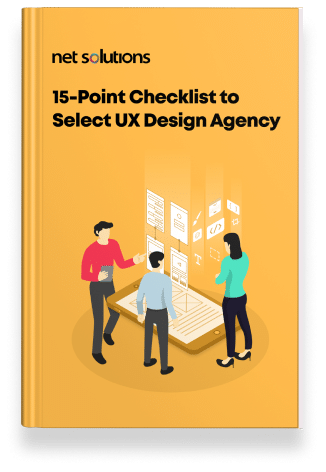
We respect your privacy. Your information is safe.
What is Design Ops?
Design Ops (sometimes written DesignOps) is a systematic approach to organizing, standardizing, managing, and scaling the product design approach of a software development company. At larger companies, there is often an entire department dedicated to Design Ops, while smaller companies may have a single person responsible for the job. Alternatively, these smaller companies might have no specific role dedicated to Design Ops but instead prioritize a Design Ops mindset within their culture (more on that below).
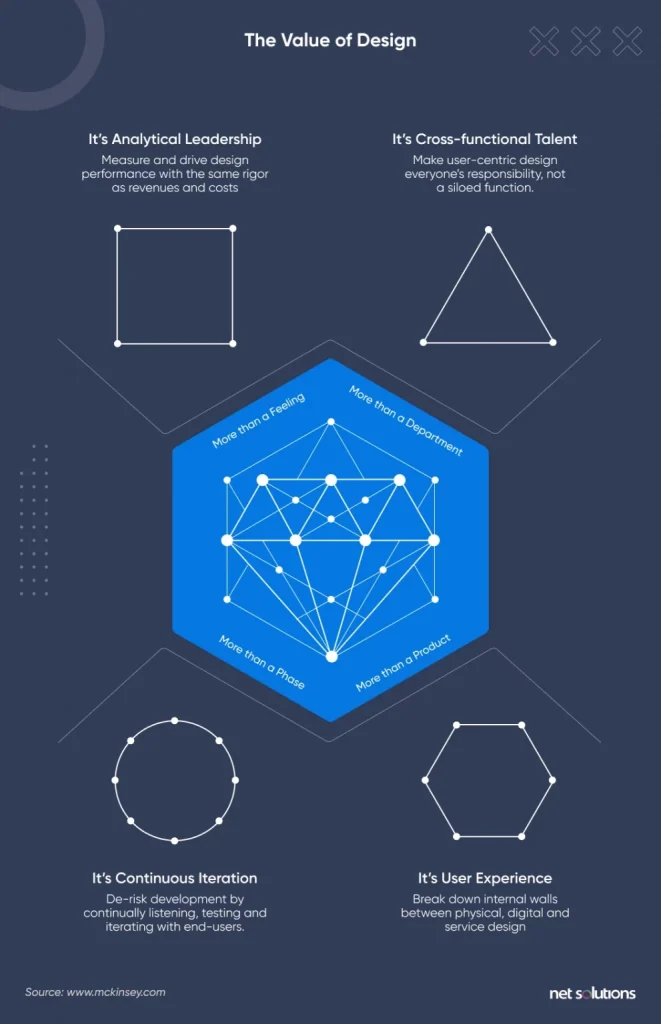
Just as DevOps takes a strategic approach to software planning and executing development using methodologies like Agile and Lean UX, Design Ops looks at the big picture associated with building an effective Design team and designing impactful products. This involves thinking about how Designers can work more effectively with each other and with the developers who implement their ideas and how their work impacts their customers. It also includes building a highly skilled team through effective recruiting and employee upskilling.
Ultimately, Design Ops creates an environment where teams can design effective products and communicate their vision to engineers and the rest of the company. A well-orchestrated approach to Design Ops paves the way for profit and success.
3 Pillars of Design Ops
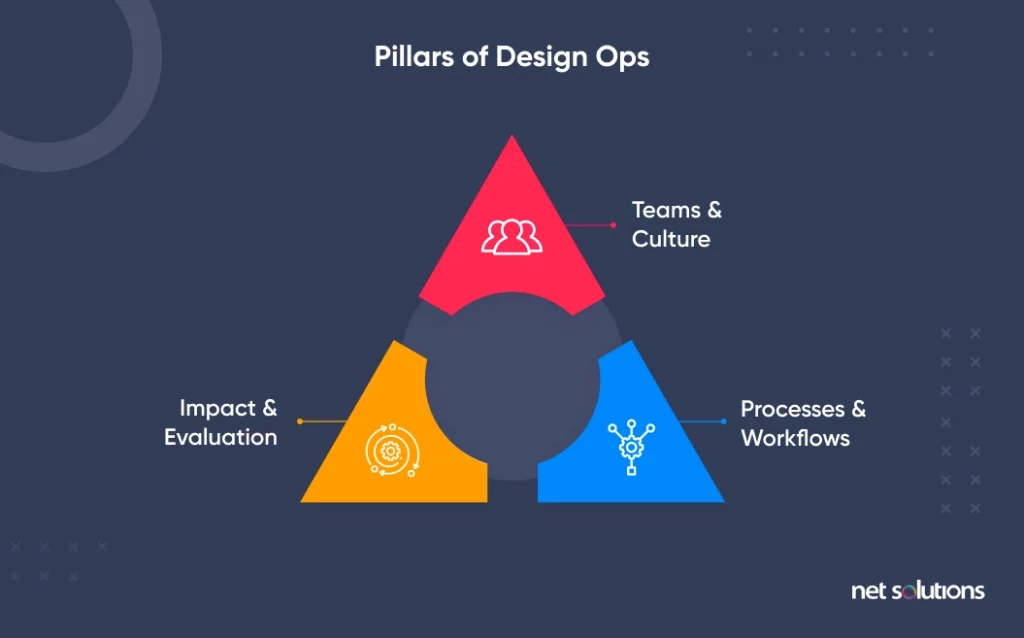
Design Ops professionals often discuss the three pillars, or core principles, of Design Ops. These include how employees and teams work together, how they get things done, and how they create impact through design. Let’s explore each in more detail.
Pillar #1: How Design Teams Work Together
The most successful tech companies spend a lot of time thinking about how their employees collaborate and communicate. Leaders who fail to consider these concepts end up with a great deal of inefficiency, not to mention subpar products that rarely stand out in a crowded market.
The first pillar of Design Ops focuses on things like:
- Creating strategic meeting cadences and agendas
- Effective, inter-departmental communication
- Hiring skilled Design team members
- Building teams members’ skill sets
- Providing proper coaching, mentoring, and training
- Creating well-balanced teams with a variety of skills
- Encouraging collaboration
- Establishing clear roles and job duties
- Standardizing communication
Pillar #2: How Design Teams Get Work Done
The design team’s day-to-day approach to their work is the second essential element of the Design Ops model.
The second pillar of Design Ops includes:
- Identifying and documenting work processes
- Harmonizing workflows to create scalable systems that will be accessible to future employees, even after years of turnover
- Intelligent project prioritization
- Consistent use of software tools for communication, production, and collaboration
- Access to user research data
- Effective budget management
- Reasonable workloads and workflows (so Designers aren’t overwhelmed)
Pillar #3: How Design Teams Create Impact
Design directly impacts a product’s success and a company’s bottom line, and it’s the role of Design Ops to measure, evaluate, and communicate this impact throughout the company.
The third pillar of Design Ops involves:
- Establishing and implementing consistent techniques to measure the impact of design on things like customer experience, sales, retention, etc.
- Consistent tracking, across all projects, over time
- Thorough documentation of design impact
- Creating and sharing case studies throughout an organization to create a design-driven culture—one where every employee understands the value and impact of product design
- Gathering input from non-designers (everyone from Customer Support to Engineering), who can offer unique insights on product design based on their experience
Why Is Design Ops Important Today?
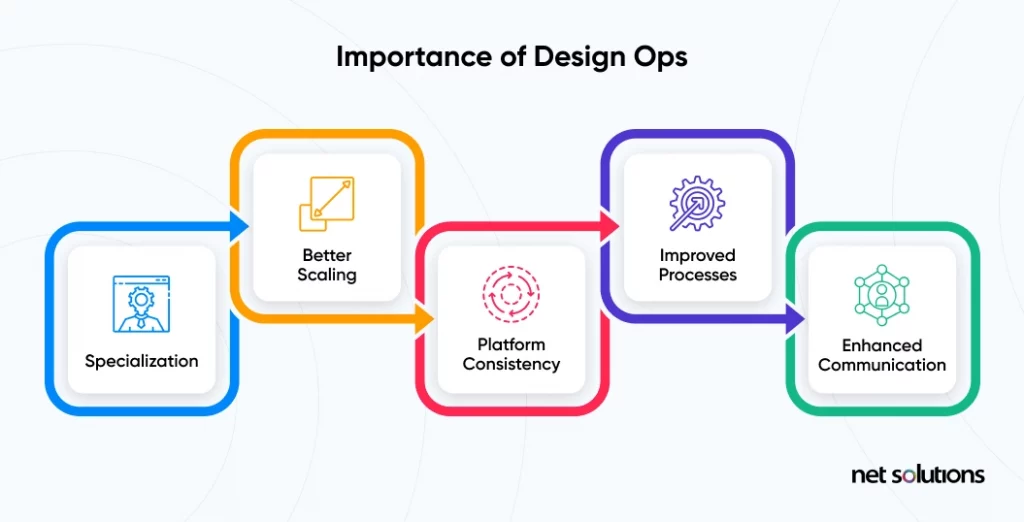
Software is a mature industry with a great deal of competition. As competition increases, companies must develop better processes to survive (hopefully thrive).
To illustrate this point, think about the early days of the automobile. Henry Ford gained a distinct advantage by figuring out how to mass produce the Model-T on an assembly line, which was an optimal process back in his day. This is similar to the advantages experienced by software companies that early operationalized areas like design and development.
Eventually, the rest of the software industry (like the automotive industry) emulated these innovative strategies, and companies that didn’t follow suit simply couldn’t keep up. Today’s most successful software companies use a strategic approach to design to scale their organizations and expand their market share effectively.
Specialization Is Key
A 12-person start-up can do just fine with a team of scrappy entrepreneurs who wear many hats, but that usually won’t work for a mid-sized organization. If Designers and their managers are too focused on processes, they won’t be able to spend their time doing what they do best—designing and thinking about the broader vision of the role of design in their products.
Design Ops Helps You Scale
As startups grow, communication breaks down. Design Ops helps unify everyone in a clear vision and creates consistent processes to survive growth and the inevitable turnover that every company experiences.
Consistency across Platforms
When Designers use different tools to create and collaborate (both within their department or outside their department), miscommunication occurs, and coordination fails. Design Ops works to overcome those issues.
Improved Internal Processes
Documenting a set of processes encourages teams to think about those processes and how they fit with other activities. When done strategically, Design Ops can improve internal processes within the Design team.
Improved Communication Across Teams
Information silos are an inevitable challenge that large companies face. This issue underscores the importance of Design Ops since a significant focus on Design Ops involves effective communication both within Design teams and beyond those teams.
The Role of Design Ops + Its Unique Advantages
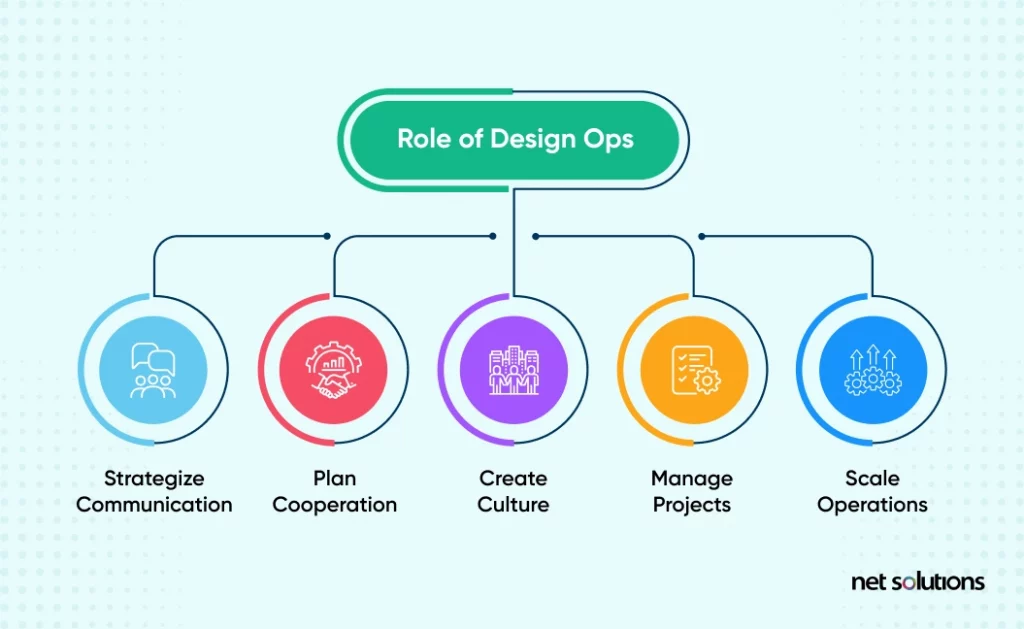
The purpose of Design Ops is to support design—plain and simple. An effective Design Ops initiative lets Designers do what they do best. By taking operations off the plate and allowing Designers to create, many opportunities arise, including the following.
Creating Strategies for Internal Communication and Interdepartmental Cooperation
Communication is key to any business, and that’s especially true for knowledge workers. How often have you received an email that the sender considered crystal clear but had no idea what they were trying to express?
Designers can waste countless hours trying to bring someone’s vision or feedback to life, only to realize they misunderstood the intent. Having a clear strategy for communication, which is at the core of Design Ops, can help mitigate that risk. Clear communication also encourages interdepartmental cooperation, breaking down silos that separate teams. These silos can exist within the same department (e.g., between two different Design teams) and across departments (e.g., Design and Engineering).
Creating a Design Culture
Design culture places design at the forefront of everyone’s mind, both inside and outside the realm of product management. Everyone from Customer Support reps to the CEO should consider design and how it relates to customer satisfaction and company goals. One role of Design Ops is to successfully evangelize the value of quality design through an organization, helping create a design culture.
Managing Projects and Scaling Operations
The Design Ops approach is key to efficient project management, developing systems and processes that lead to greater efficiency and effectiveness. As companies grow every element of their Product Management efforts, established procedures allow for effective scaling with minimal bottlenecks.
With a few tweaks here and there, these time-saving systems will continue to work in the months and years to come—far beyond the early-growth phase when Design Ops is often implemented. These processes also make it easier to manage resources efficiently and effectively.
How to Implement Design Ops at Your Company
There are several ways to go about implementing Design Ops at your organization. The most comprehensive approach would be to create a Design Ops department, hiring a set of Design Ops professionals whose entire job is dedicated to helping Design teams work more effectively.
Some companies won’t have the resources or even the need for an entire department, especially if they’re smaller. Those companies might instead task one person with handling Design Ops and building the processes surrounding it.
Building a Design Ops Culture
Whichever approach you take, building a Design Ops culture is key. A Design Ops culture prioritizes product design and gets the entire organization thinking about ways to improve the design, user experience and achieve impact.
This means those in customer-facing roles (e.g., Sales, Customer Support, Onboarding/Customer Success) gather customer feedback and deliver that data to the Design team. It means that Software Engineers work to understand design principles and bring their Designers’ visions to life. And, of course, it means C-Suite executives understand the value design plays in company growth and clear roadblocks to getting Design teams everything they need to succeed.
Encouraging Collaboration Across Teams
Cross-team collaboration is key to successful Design Ops implementation, and it often involves developing consistent language to discuss design concepts. While it may seem like extra work to standardize communication, anyone who has worked in software Design or Development knows how difficult it is to communicate an abstract concept surrounding design, user workflows, and User Experience (UX) challenges.
Consciously developing a language surrounding design, and creating systems that facilitate clear communication, can save you countless hours and resources in the long run—and result in far superior products!
Forbes has an interesting Design Ops Checklist which they think every organization can use to specify the way it will go through the process.
Who Handles Design Ops in an Organization?
A single person might handle Design Ops at small companies — or nobody! In some cases, Design Ops is more of a mindset and a set of processes than a role or department. At larger companies, Design Ops usually consists of an entire team. Here are some of the roles involved in Design Ops.
Design Producers: These Design Ops professionals focus on the project level, ensuring each project has the support it needs to succeed.
Design Program Managers: Design Program Managers structure and organize design programs to ensure the proper systems are in place to support all project teams.
Research Ops Specialists: These professionals own all the operations associated with research, from sourcing and vetting participants to managing research programs.
Two General Design Ops Models
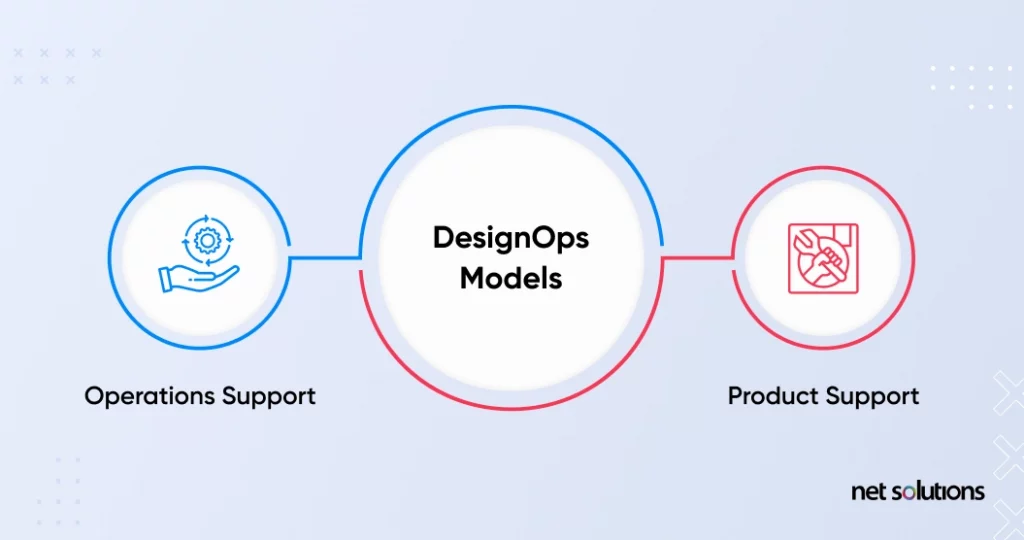
There are different ways to approach Design Ops, and organizations can tailor their approach based on their unique demands. Collin Whitehead of Dropbox identifies two strategies he’s seen work over the years, which he discusses in a piece he wrote for InDesign. The two models he remembers are Operations Support and Product Support.
Operations Support: This Design Ops model involves working at a high level to set standards and provide guidance to all product teams. It includes design tooling and systems, communications, recruiting, team development, and budgeting.
Product Support: This Design Ops model involves Design Program Managers embedding themselves into specific projects to guide them along the way. It means helping Designers and their team members strategize correctly and integrate the necessary tools (from software to communication tools) into their workflow.
Keep in mind that there’s no definitive line between these two models, and many companies will use a combination of the two. Find a strategy that works for your organization, and don’t worry if it blurs the lines between these two general Design Ops models.
Design Ops and DevOps: Two Sides of the Same Coin
One of the most important lessons of Design Ops is that design doesn’t exist in a vacuum. It’s integrally related to other elements of the business, and that’s especially true of DevOps. After all, Developers are responsible for creating the products and features that Designers dream up.
Design Ops and DevOps should work hand-in-hand to create systems and processes that work well. If Design Ops wants to use road mapping software to help convey the larger vision to the rest of the company, DevOps may want to choose a vendor. Perhaps one road mapping software integrates better with the Development team’s project management platform. Unless Design Ops and DevOps regularly collaborate, they could miss opportunities to fully integrate their processes and optimize workflows.
When is the Right Time to Think About Design Ops?
Design Ops typically isn’t necessary at the early startup stage because there are so few people working on a project that communication gaps are rare, and alignment isn’t an issue. However, Design Ops becomes crucial as teams begin to scale and the need for a more streamlined and efficient process arises. It is all about coordination, strategy, and systematizing to keep everyone on the same page regarding design goals, particularly in digital experience design.
So, when is it time to think about creating a Design Ops initiative? Here are a few key indicators.
- High growth that demands greater innovation
- Expansion into new markets or product lines
- Increased demand for design based on market forces or customer feedback
- Design team growth along with greater specialization for different teams and members
- Increased employee count (especially when team members are in other locations)
Any of these milestones could make you stop and think about the value a formal Design Ops department would bring. Still, you’ll want to start thinking about Design Ops as a concept long before introducing it as a formal initiative.
As early-stage startups think strategically about their software development methodologies, you’ll benefit from getting everyone on your team thinking about how design fits into the larger picture long before you’re ready to scale. Doing so will create a strategic, design-focused mindset in your nascent culture that will set the stage for a formal Design Ops initiative when the time is right.
Frequently Asked Questions
Creative Ops is very similar to Design Ops. The main difference is that Creative Ops oversees all the operations related to creative output—from microcopy to advertising to design. Meanwhile, Design Ops focuses on operations, people, and processes related exclusively to Design.
Design Ops creates structured, repeatable processes that are ultimately scalable. Over time, through experiments and post-mortems, Design Ops can optimize these workflows to achieve impactful products more efficiently.
Creating a Design Ops team is an excellent way to scale Design Thinking across a company since communicating the value of design and aligning an organization around design goals is central to the Design Ops mission.
Design Ops, when done right, is not just another buzzword. It’s a methodology for understanding and organizing a company’s approach to design and integrate that approach with their software development strategy (along with every other element of the company). Good design separates mediocre products from those that dominate the market. Innovation & design are central to delivering what customers want. Integrating customer feedback into the design and ensuring that developers solve your customers’ problems is key to any company’s success.

